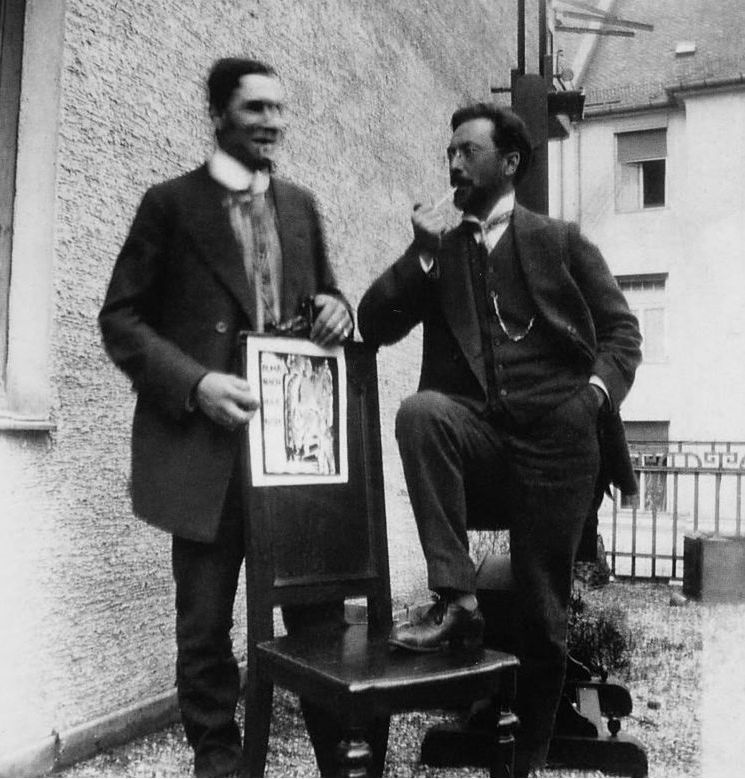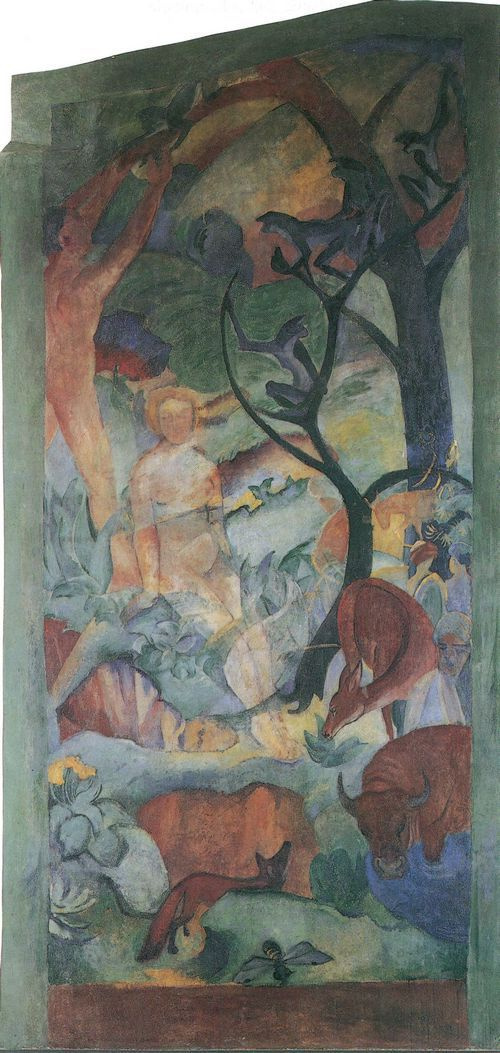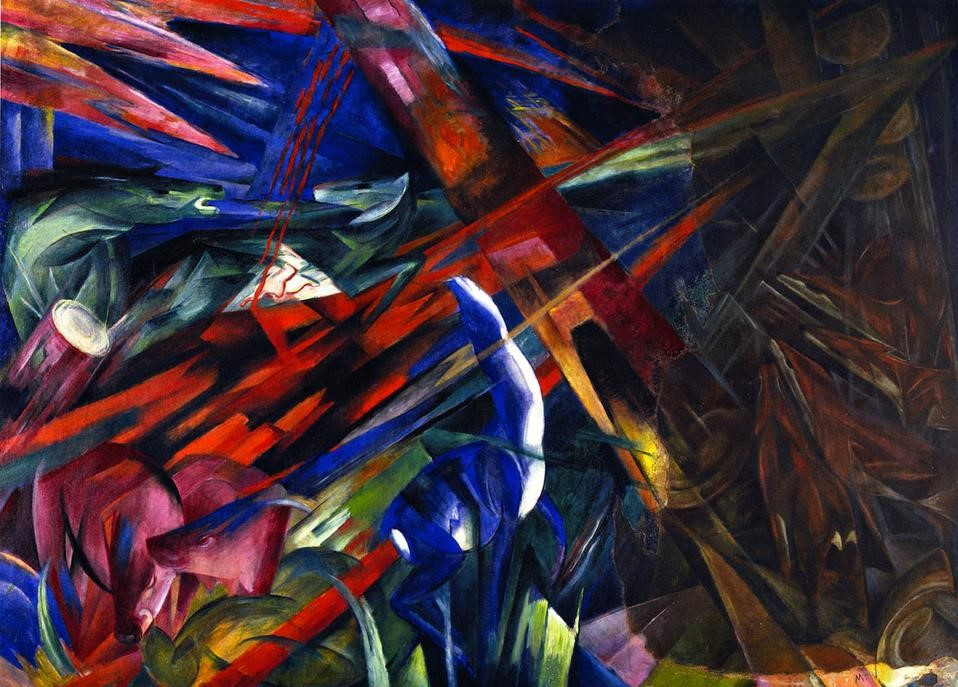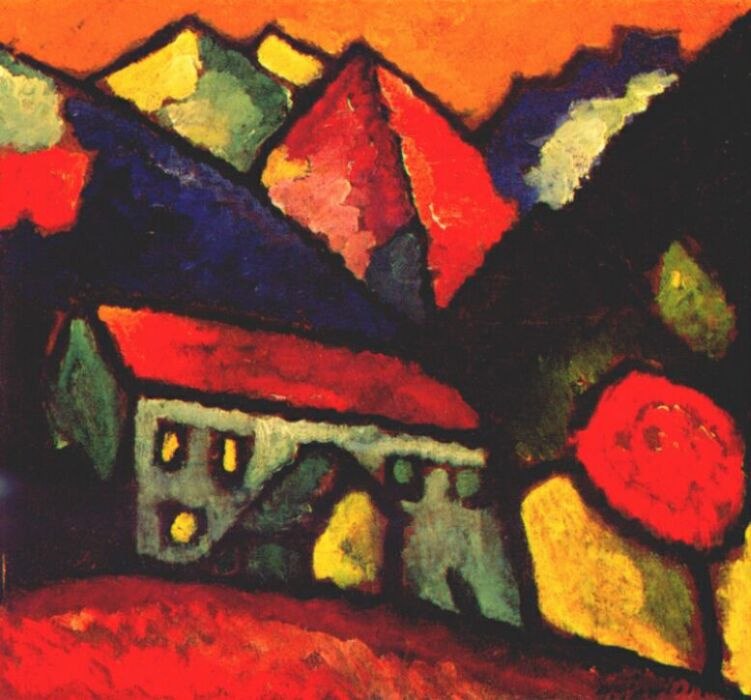

Wassily Kandinsky
The notable lawyer Kandinsky saw "Haystack" by Monet at an exhibition of Impressionists in Russia. He eventually left his professorship and came to Munich to study painting. He was more than 30 years old, he could do nothing yet and was a far cry from an artist.Before and after "The Blue Rider", Kandinsky managed to start and take part in several grand projects in different countries ("Phalange", Munich New Artist’s Association, Svomas and Vkhutemas, Bauhaus). He lived 74 years, which was a unique luck for the artists of his generation. Thus, "The Blue Rider" was quite important, but not the only undertaking within his creative research.

Later, Kandinsky remembered these three years before the First World War: "The blue rider is the two of us, Franz Marc and I." The almanac was the starting point: Kandinsky and Marc, who were carried away by the search for connections between music, theatre and painting, conceived to introduce these links to the new avant-garde magazine. They dreamed to publish it in Munich, Paris and Moscow. They also had no problems with the name: "We both liked the blue colour. I liked riders, and Marc liked horses."
Franz Marc
Franz Marc was the only person in Bavaria who accepted and understood the exhibition of the "New Artist’s Association" in 1910. Every evening after the closing of the gallery, its owner had to clean the paintings, because they were all covered with spits. Nevertheless, the young artist Marc from a tranquil country sent a letter to Kandinsky, in which he admired the courage and strength of the works presented at the exhibition.They did not meet then — it would only happen a year later. During this time, from 1910 to 1911, Marc already found his way, successfully held his first solo exhibition and acquired a patron collector who paid the artist a monthly fee for the right to be the first to buy his pictures.
Marc was inspired by Kandinsky’s ideas about the "synthetic book". He became the second chief editor of the future almanac and wrote three small essays to open the magazine.
Paul Klee
Before "The Blue Rider", Paul Klee was an alone artist, unrecognized by anyone, including himself. Even after he graduated from the Munich Academy of Arts, read hundreds of books about painting and began to paint himself, Klee continued to live in quiet Switzerland and work in a municipal orchestra. He made painting his timid dream and a fascinating experiment.Throughout all his life, Klee found himself within very powerful currents and ideas, but he always remained a unique artist, unaffected by any influences. The short period of "The Blue Rider" did not become an exception. After moving from Bern to Munich, the artist finally got surrounded by like-minded people. The most intense artistic life raged here, in Munich (no longer in Paris) in those years. It is in the Bavarian capital that an avalanche of new "pure" art blew down the framework of academic stagnation and blurred the boundaries between times and countries.

Paul Klee and Wassily Kandinsky were classmates at the Munich Academy of Arts, then participants of "The Blue Horseman" group, and a few years later they taught at the famous Bauhaus. They made amusing conversations about the fate of contemporary art, and they loved to play music together: Kandinsky played piano, and Klee played violin.
August Macke
August Macke did not have time for numerous projects and artistic movements, he only lived for 27 years and died during the First World War. His entire short creative biography can be divided into two parts: before and during "The Blue Rider" period. The period after "The Blue Rider" already ran without Macke.
In his early youth, he traveled a lot and made sketches in watercolor, pencil, pastel — as if he had a long and sweet preparation to a future big business. If Macke managed to live a little more and win back a little time from history, he could certainly talk about his own genre, a sketch album. Macke created 78 of them during the period before "The Blue Rider".

Trips, sketches and paintings by Macke were not as valuable for "The Blue Rider" as his friendship with Franz Marc. They were quite different; Macke was emotional and quick-tempered, while Marc was rather thoughtful and silent. However, they worked together, they wrote impatient letters to each other like departed lovers, they inspired each other and found their own place in art through their disputes. The brilliant quotes of Franz Marc about colour, shape and painting are all taken from the correspondence with Macke. The "Paradise" fresco (the photo to the left) they painted together in the house of Macke, probably experiencing the next to heavenly state from their joint creativity.
Marianne von Werefkin and others
Perhaps, "The Blue Rider" would never be what it was, if it wasn’t for Marianne von Werefkin. She was a disciple of Repin, a Russian heiress, an artist who had not only a talent, but also a virile analytic mind, art history skills and speaker’s gift. She came to the German town of Murnau with a clear idea of "pure" emotional art, with her unerringly bold and untimely view of the works by Van Gogh, Gauguin, Munch, and she discussed the art development with Kandinsky, she interpreted the newest and boldest pictures by new artists all day long. In her "Pink Salon", she hosted the directors of German galleries and avant-garde artists, Russian dancers and German composers. Marianne von Werefkin became the most convincing preacher of the new art to German artists.The main illustration: Franz Marc, "Saint Julien", 1913, watercolor, gouache , bronze powder, paper, Solomon Guggenheim Museum, New York City.
See also: a selection of works by the artists of "The Blue Rider" group.




















